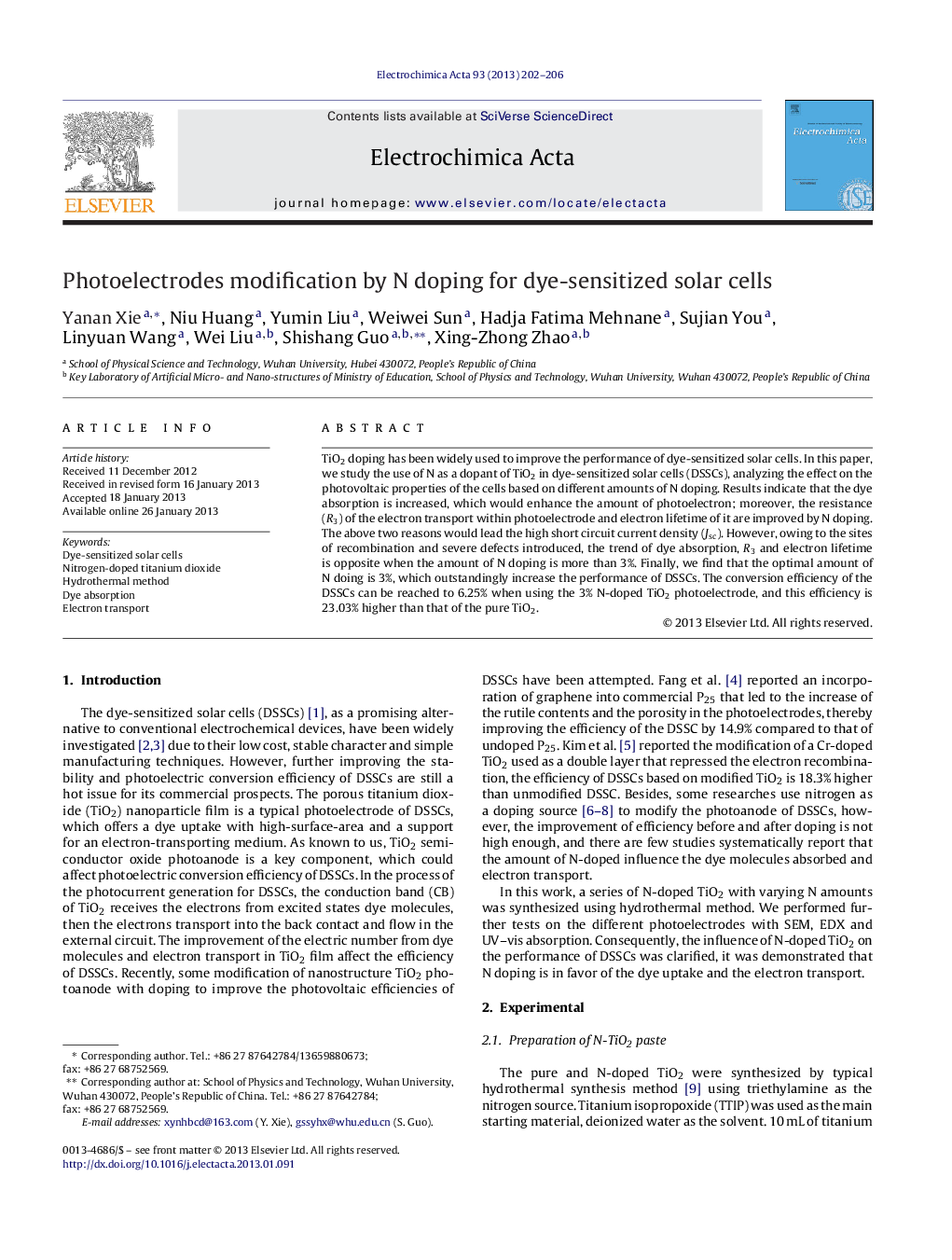| Article ID | Journal | Published Year | Pages | File Type |
|---|---|---|---|---|
| 6618078 | Electrochimica Acta | 2013 | 5 Pages |
Abstract
TiO2 doping has been widely used to improve the performance of dye-sensitized solar cells. In this paper, we study the use of N as a dopant of TiO2 in dye-sensitized solar cells (DSSCs), analyzing the effect on the photovoltaic properties of the cells based on different amounts of N doping. Results indicate that the dye absorption is increased, which would enhance the amount of photoelectron; moreover, the resistance (R3) of the electron transport within photoelectrode and electron lifetime of it are improved by N doping. The above two reasons would lead the high short circuit current density (Jsc). However, owing to the sites of recombination and severe defects introduced, the trend of dye absorption, R3 and electron lifetime is opposite when the amount of N doping is more than 3%. Finally, we find that the optimal amount of N doing is 3%, which outstandingly increase the performance of DSSCs. The conversion efficiency of the DSSCs can be reached to 6.25% when using the 3% N-doped TiO2 photoelectrode, and this efficiency is 23.03% higher than that of the pure TiO2.
Keywords
Related Topics
Physical Sciences and Engineering
Chemical Engineering
Chemical Engineering (General)
Authors
Yanan Xie, Niu Huang, Yumin Liu, Weiwei Sun, Hadja Fatima Mehnane, Sujian You, Linyuan Wang, Wei Liu, Shishang Guo, Xing-Zhong Zhao,
